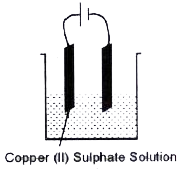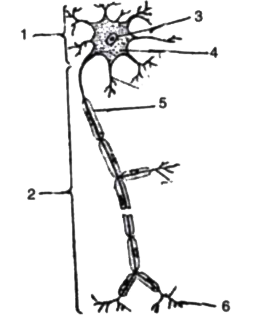Copper sulphate solution is electrolysed using copper electrodes. Study the diagram given below and answer the question that follows: Which electrode to your left or right is known as the oxidising electrode and why?

At anode : Cu−2e−→Cu2+
At cathode : Cu2++2e−→Cu
Topper's Solved these Questions
- CHEMISTRY-2013BOOK - ICSECHAPTER - CHEMISTRY-2013EXERCISE - SECTION-II (40 Marks)
48 Videos
- CHEMISTRY 2014BOOK - ICSECHAPTER - CHEMISTRY 2014EXERCISE - SECTION-II
55 Videos
- CHEMISTRY-2015BOOK - ICSECHAPTER - CHEMISTRY-2015EXERCISE - SECTION-II (40 Marks) Attempt any four questions from this Section.
49 Videos
Similar Questions
Copper sulphate solution is electrolysed using copper electrodes. Study the diagram given below and answer the question that follows:

Write the equation representing the reaction that occurs.
View SolutionStudy the diagram given below and answer the questions that follow :
What is emulsification?
View Solution
Knowledge Check
Study the given figure and answer the question that follow:

Which electrode is the oxidising electrode?AABBCBoth (a) and (b)DNone of theseStudy the diagram given below and answer the questions that follow:

The structure marked 'E' is ______ACorpus luteumBSecondary follicleCGraafian follicleDCorpus albicansStudy the diagram given below and answer the questions that follow:

Menstrual cyde operates in ______AAll vertebratesBAll mammalsCOnly primatesDOnly apes
Study the diagram given below and answer the question that follow

Which electrons is the oxidising electrode ?
View SolutionStudy the diagram given below and answer the questions that follow :

Why is oil placed over water
View SolutionCopper sulphate solution is electrolysed using copper electrodes. Study the diagram given below and answer the question that follows:

State two appropriate observations for the above electrolysis reaction.
View SolutionStudy the diagram given below and then answer the question that follow :

Identify the cell.
View SolutionStudy the diagram given below and answer the question that follow

Give the names of the electrodes A and B.
View Solution
